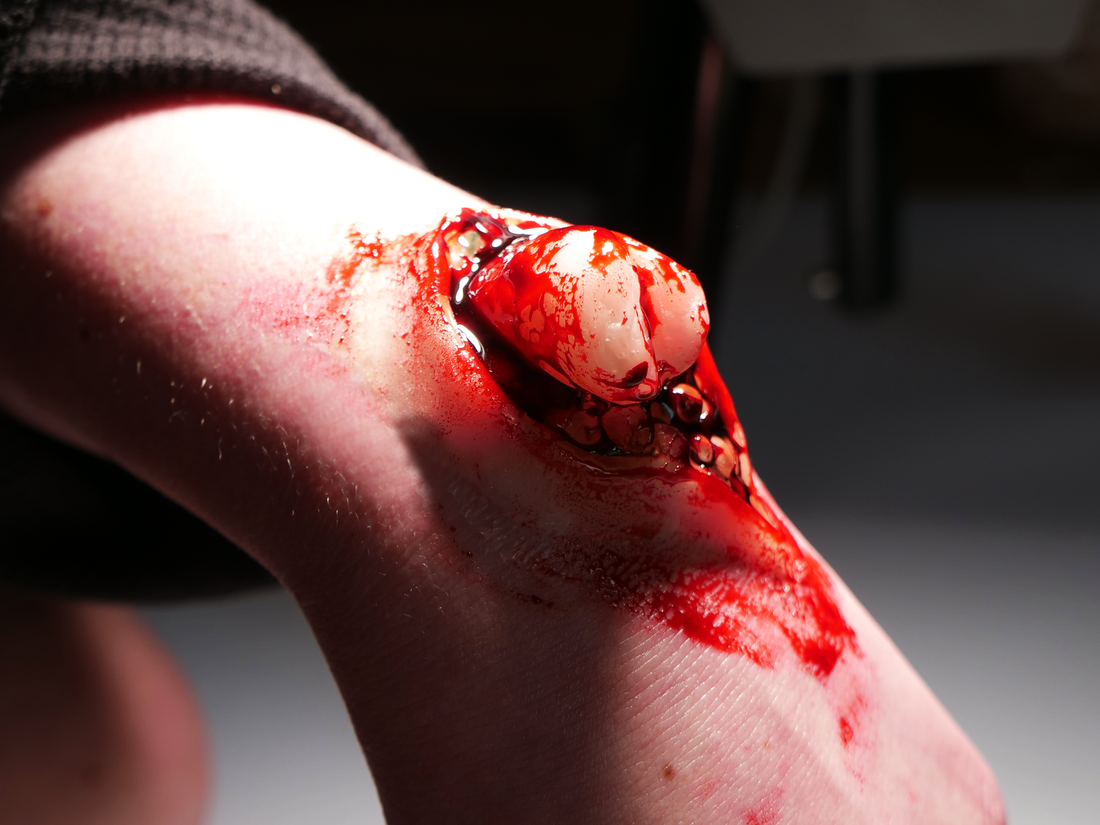
📁 CASE FILE: Why Encapsulated Silicone Feels So Disturbingly Real
log ref: #SFX-ENCAPSIL_Δ03
specimen class: soft tissue replication
notes: high realism, low uncanny threshold, repeatable results
“Sometimes people ask what it’s made of. I say: skin, I'm kidding! Or am I?”
—Dimply // Lead Containment Officer
SYSTEM NOTE: REALISM THRESHOLD BREACH
Inside the DRF (Dimply Research Facility), one question repeatedly echoes down the corridor:
Why does this feel so real?
Whether it’s a severed nose, a crawling leech, or a whole set of handmade intestines, our props often provoke the same reaction:
-
👀 “Wait, is that… real?”
-
🤢 “Ew, it’s squishy.”
-
😂 “I hate how much I love this.”
This uncanny reaction is intentional, and it’s largely thanks to one technique:
Encapsulated Silicone.
What Is Encapsulated Silicone?
Think of it like a skin suit for silicone.
Encapsulation is the process of wrapping a soft medical grade silicone core inside an ultra-thin cap plastic barrier layer. This outer membrane behaves like epidermis, subtly dissolved away with isopropyl alcohol or acetone, while the interior remains soft, squishy, and disturbingly lifelike.
It’s a layered system that allows us to replicate a real wound or skin addition, as if it was actually emerging from real skin.
Why It Feels So Real
Encapsulated silicone is more realistic because there are no obvious edges, giving it away that's an addition, and this is all thanks to the cap plastic.
When touched, squeezed, or stretched, it engages the viewer’s proprioceptive memory, the brain’s recognition of how skin and flesh should respond. That’s when you get the gasp. The pause. The instinct to recoil… or poke it again.
When We Use It (and When We Don’t)
We deploy encapsulation in projects that need:
-
Close-up realism (film, photography, or medical training
-
Comfort against real skin (e.g. prosthetics worn for hours)
For fast, high-wear SFX, we may switch methods, using something like a bondo transfer. But when realism is the mission?
We encapsulate.
“People expect fake things to feel fake. We prefer to disappoint them.”
—Dimply // Archive_Operator_Δ
Behind the Layers: What We Actually Use
Without giving away the full secret sauce, here’s a peek:
-
Core: Soft platinum medical grade silicone, 10 shore or softer
-
Barrier: Isopropyl alcohol cap plastic airbrushed, to ensure it's as thin as possible
-
Pigments: Intrinsic and hand-painted layers with silicone paints
Want to see it in action? Check out our prosthetic collection or request a custom piece through our contact form.
If It Feels Wrong, It’s Working
If you recoil just a little…
If someone asks, “is that real?” and then backs away...
We’ve done our job.
Explore the archives: dimplybean.com
Stay soft. Stay synthetic.
🧬
— Archive_Operator_Δ
